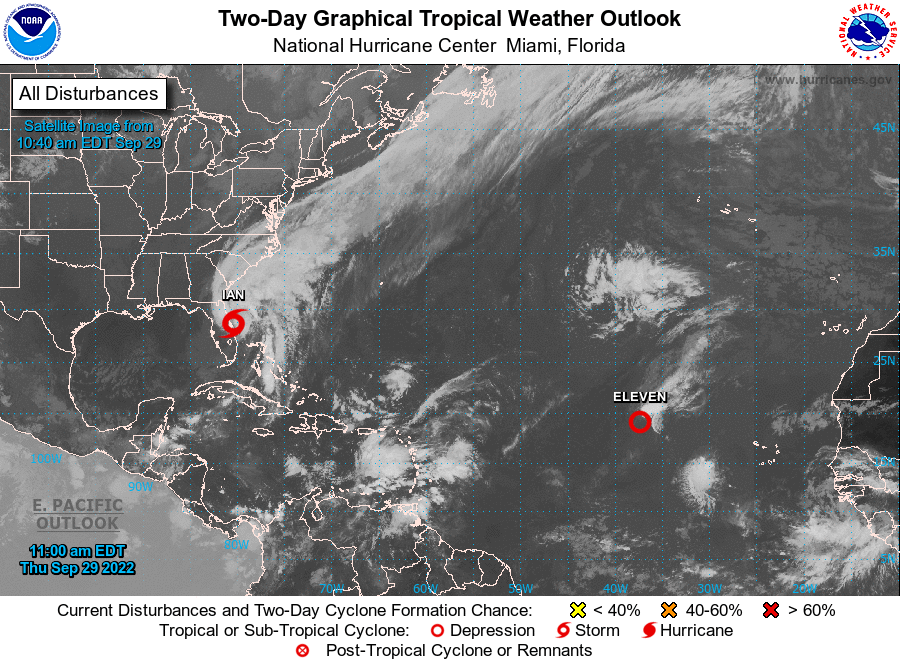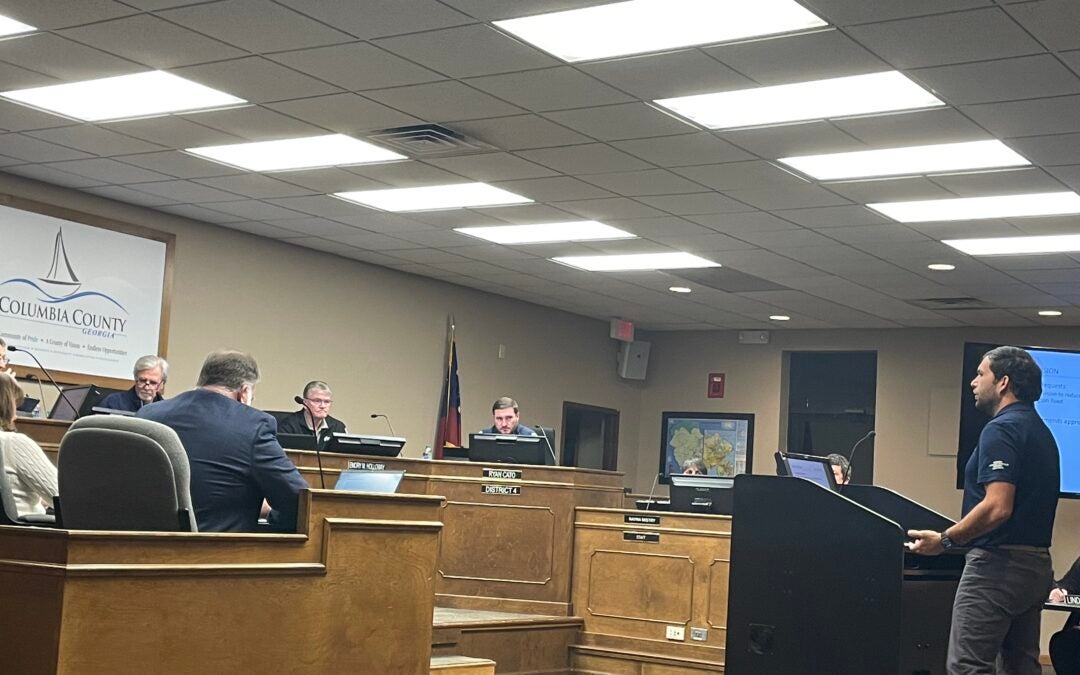(Editor’s note: This story will be updated as additional information comes in)
(Updated at 3:35 p.m. Thursday to include comment from Steven Flynt and provide additional info on Augusta sandbag distribution event.)
Although Ian has shifted its trajectory and should miss most of Georgia, the Augusta area is under a Tropical Storm Warning, precipitating closings and a sandbag distribution.
The National Weather Service issued the Tropical Storm Warning at 11:27 a.m. Thursday for multiple Georgia counties including Burke, Columbia, McDuffie, Richmond and South Carolina counties including Edgefield and Aiken.
Richmond County Schools are closed on Friday, while schools in Aiken County have prepared to work remotely. In McDuffie County, school has been cancelled, and students will not have to make up the day.
So far, the Columbia County School District has not cancelled classes. Around 3:30 p.m. Thursday Steven Flynt, Columbia County’s school superintendent, reiterated that school will continue as planned Friday; however, the situation is being monitored.
News releases from both school systems cite the possibility of heavy rain and winds for the alteration of the schedule. Earlier in the week school systems moved regularly scheduled football games to Thursday. After-school events have been cancelled in Richmond County.
The city of Augusta had a sandbag distribution beginning at 3 p.m. Thursday at 2316 Tobacco Rd. All the bags were gone in 30 minutes.
Ian has been downgraded to a tropical storm after slamming Florida, trapping many Floridians and cutting off power to more than 2 million.
According to the Associated Press, Ian ranks as one of the strongest hurricanes to ever hit the United States bringing the threat of catastrophic flooding around the state of Florida. Its tropical-storm-force winds extended outward up to 415 miles and drenching much of Florida and the southeastern Atlantic coast.
Its project path threatens the Georgia and South Carolina coasts before moving inland through South Carolina, and it’s expected to regain strength and possibly become a hurricane again once it hits the Atlantic.

According to the National Weather Service, potential impacts of a tropical storm include “large tree limbs broken off. A few trees snapped or uprooted, but with greater numbers in places where trees are shallow rooted. Some fences and roadway signs blown over. A few roads impassable from debris, particularly within urban or heavily wooded places. Hazardous driving conditions on bridges and other elevated roadways. Scattered power and communications outages.”
The weather service anticipates heavy rainfall and strong, gusty winds to impact the South Carolina Midlands and Central Savannah River Area beginning late Thursday.
At 11:27 a.m. Thursday, the storm was located about 330 miles south of Orangeburg S.C. or about 360 miles south of Sumter S.C. and the storm intensity is at 70 mph. It’s moving north-northeast at 9 mph.
On Tuesday, Georgia Gov. Brian Kemp declared a state of emergency for all of Georgia’s 159 counties that took effect Thursday morning.
In South Carolina, Gov. Henry McMaster urged residents to finalize storm preparations Thursday.
“If you haven’t yet made plans for every contingency, this afternoon is the time to do so,” said McMaster in a news release. “We can expect to experience a lot of rain throughout the state along with dangerous storm surge in low-lying coastal areas. With the potential for hurricane force winds along our coast, it’s important for South Carolinians to plan now.”
The city of Charleston is preparing for impact.
The mayor of Charleston, South Carolina, is asking his city to shut down Friday as storm Ian approaches.
“There will be water tomorrow in this city,” Mayor John Tecklenburg said.
No evacuations have been ordered in South Carolina, which is under a state of emergency.
Forecasters warn several feet of ocean water could surge into low areas along the coast, like Charleston.
Augustans will be involved in relief efforts.
“The Salvation Army of Augusta is preparing resources and personnel to meet the immediate needs of survivors and first responders ahead of Hurricane Ian’s potentially historic landfall in Florida,” according to a news release from the Salvation Army of Augusta. “In Augusta, the emergency vehicle and staff members are being deployed to serve those affected by the storm.”
The organization assists with food and shelter.
Nationally, The Salvation Army has as many as 37 mobile feeding units, and one is being deployed from Augusta and one field kitchen ready to mobilize across the impacted area immediately after the worst effects of the storm are realized. Each unit can feed between 500 and 1,500 people per day, the release said.
Liz Wright and Associated Press contributed to this story.












